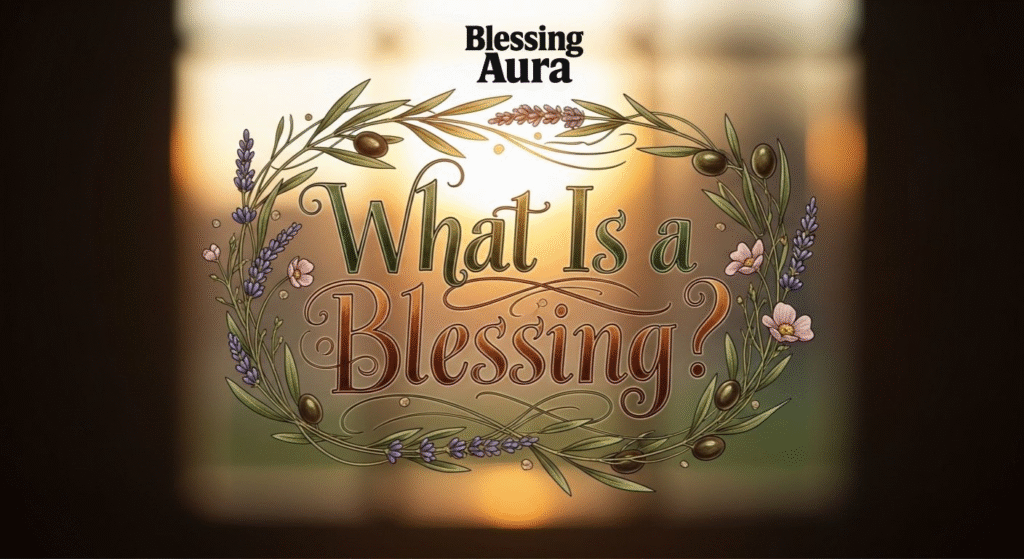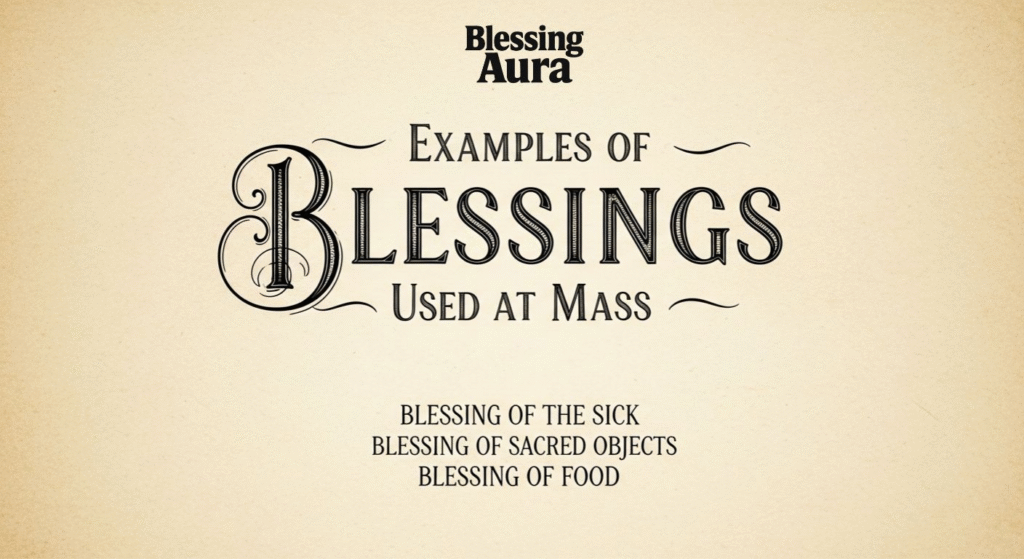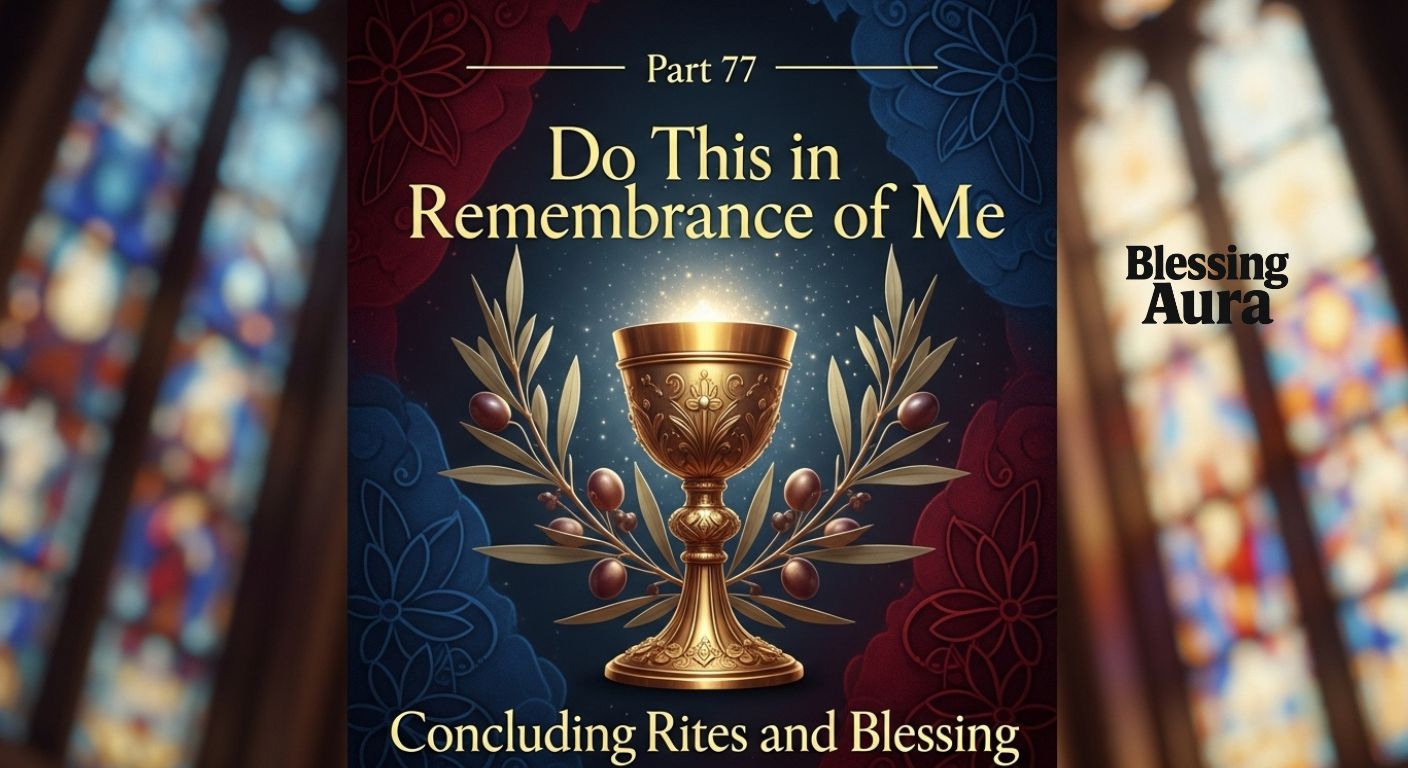The Concluding Rites and Blessing form the final yet powerful part of the Catholic Mass structure. After the Prayer after Communion, the priest leads the faithful with the Priest’s Greeting and prepares them for the dismissal of the people. These closing moments are not a simple ending but a spiritual sending, filled with meaning and purpose. Through blessings, the Church invokes God’s care and grace, offering the faithful renewed strength. The Concluding Rites and Blessing remind us that we carry the presence of Christ beyond the altar, continuing His mission in our homes, workplaces, and communities. This final prayer unites worship with daily living.
What Is a Blessing?

The Definition of blessing (CCC, Catechism of the Catholic Church) describes it as a prayer that calls down God’s power and care. To bless is to ask for divine help and to recognize God as the source of every good thing. In the sacramentals in the Catholic Church, blessings come first, and they cover many parts of life, including the blessings of persons, meals, objects, and places. Every blessing is not just a wish but a real calling down of divine love. “Every blessing praises God” because it reminds us that He is the giver of all gifts.
Receiving a blessing is not passive. When the priest says, “Bow down for the blessing”, we physically show our readiness to receive. This posture signals humility before God and the openness to receive His grace and protection. In this moment, the faithful are reminded that the Mass is not ending but continuing as they carry God’s blessing into their homes, workplaces, and communities.
Examples of Blessings Used at Mass

There are many ways blessings are given in the liturgy. One moving example is the Solemn Blessing for Ordinary Time II, which echoes the Peace of God (Philippians 4:7). The priest prays that the peace surpassing all understanding may guard hearts and minds in Christ. With the liturgical responses: “Amen”, the faithful actively join the prayer, welcoming divine peace.
Another option is the Solemn Blessing for Beginning of the Year, which offers several petitions. It asks God to grant integrity, perseverance, and holy patience while keeping His people safe. These blessings remind us that God’s care is constant and deeply personal. We also see this in Prayer over the People #17, which prays for increase of grace so the faithful may praise God in word and deed. Each of these liturgical prayers points us back to acknowledging the goodness of God and receiving strength, help, and protection through blessings.
Multiple Blessing Options for Mass
The Roman Missal options include Twenty Solemn Blessings and 28 Prayers over the People, showing the richness of the Church’s treasury. The discretion of the priest in choosing blessings allows flexibility so that prayers can fit the season or special occasion. For instance, Major Solemnities (Christmas, Epiphany, Easter) have unique texts that highlight the mystery being celebrated.
These blessings are not extra decorations. They are central moments where God’s Trinitarian blessing (Father, Son, Holy Spirit) comes down upon His people. Each Mass offers new opportunities to experience liturgical year blessings. The priest may offer a short benediction prayer or a longer solemn form, but both give the faithful what they need most: encouragement, peace, and renewal.
For Reflection:
Think of the reflection questions for Mass participation. When you hear the priest’s blessing, are you listening with your heart or only your ears? The anticipation of receiving blessings at Mass can help you prepare spiritually. Try to carry one line of the blessing with you, like a seed planted for the week.
The Bible offers examples of blessings that shaped lives. In Genesis 49:25–26 (Jacob’s blessing), Jacob blessed his sons by calling upon God’s strength, fertility, and protection. This shows how blessings have always been part of God’s plan. By welcoming the strengthening help from the Lord, every believer receives the grace to live out faith in daily struggles and joys.
The Role of Concluding Rites in Catholic Life
The Concluding Rites do more than mark the finish line of worship. They serve as the Church’s way of sending you forth. After the Priest’s Greeting, the dismissal of the people makes clear that faith is not meant to stay inside the church walls. It must spill over into daily life.
The gestures of altar reverence (kissing, bowing) remind us of the sacredness of the sacrifice that just took place. The final blessing is not a polite goodbye but a blessing of the faithful to carry out God’s mission. In this way, every Mass ends with purpose and mission.
Why the Blessing at Mass Is Different from Other Prayers
A blessing at Mass is unique. While petitions or thanksgiving prayers rise from the people to God, blessings flow from God through His priest to His people. It is a channel of grace given in Christ’s name. This makes it far more than a personal wish or human encouragement.
The blessing carries real power. Through it, God gives peace, strength, and guidance for the days ahead. The benediction prayer is a promise that His Spirit walks with the faithful beyond the church doors. This is why it is different from everyday words. It is God Himself offering His love.
Practical Ways to Receive the Final Blessing More Deeply
To receive blessings fully, prepare yourself. When the priest says “Bow down for the blessing”, slow your thoughts and become present. This helps open your heart to the Spirit.
After the blessing, carry it with you. Choose one phrase, like “Strength, help, and protection through blessings”, and repeat it during the week. In doing so, you live the blessing, not just hear it. That is the secret of making the Do This in Remembrance of Me, Part 77: Concluding Rites and Blessing more than a reading—it becomes your daily prayer.
FAQ’s
What happens during the Concluding Rites and Blessing at Mass?
During the Concluding Rites and Blessing, the priest greets the faithful, offers prayers, and gives God’s peace. It prepares everyone to leave strengthened for faith-filled mission.
How does the Concluding Rites and Blessing connect to the whole Mass?
The Concluding Rites and Blessing complete the Catholic Mass structure by sending the faithful out. It links the altar sacrifice with Christian mission in the world.
Why does the priest say The Lord be with you before the Concluding Rites and Blessing?
The greeting before the Concluding Rites and Blessing recalls God’s presence at Mass. The people respond And with your spirit, showing unity before receiving God’s grace.
What is the role of the Solemn Blessing in the Concluding Rites and Blessing?
The Solemn Blessing during the Concluding Rites and Blessing calls for God’s protection. It draws on scripture and tradition to strengthen hearts with faith, peace, and courage.
How should we prepare to receive the Concluding Rites and Blessing?
To welcome the Concluding Rites and Blessing, bow humbly and listen with faith. Carry one phrase from the blessing into your week as spiritual encouragement.
Conclusion
The Concluding Rites and Blessing are not just the end of Mass. They are a sacred moment where God sends His people out with grace. When the priest gives the blessing, he calls down God’s power and care on the faithful. The Concluding Rites and Blessing remind us that worship continues after we leave church. They join the altar sacrifice with daily mission. By receiving the Concluding Rites and Blessing, every believer is strengthened with peace and hope.
The Concluding Rites and Blessing include the greeting, dismissal, and final prayer. Each step is filled with meaning and faith. The blessing is more than words. It is God’s promise of guidance and protection. The Concluding Rites and Blessing send you to live your faith with courage. They give the strength to serve God and others every single day.

Welcome to Blessing Aura! I’m Muhammad Anas, an Digital Marketer and Ebay Dropshipping Expert with 1 year of experience, I help business, brands and store to grow online. My goal is to run ads and sell effective products for everyone, Let’s achieve more together!

